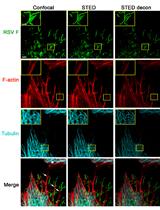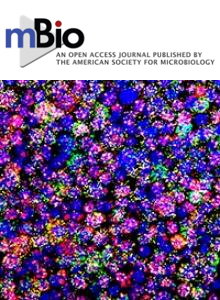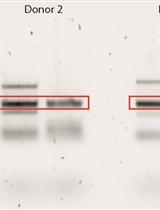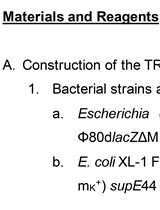- EN - English
- CN - 中文
A Triple-challenge Mouse Model of Allergic Airway Disease, Primary Influenza Infection, and Secondary Bacterial Infection
气道变态反应性疾病,原发性流感感染,继发性细菌感染的三重小鼠模型
发布: 2020年04月20日第10卷第8期 DOI: 10.21769/BioProtoc.3583 浏览次数: 4384
评审: Kristin L. ShinglerAnonymous reviewer(s)

相关实验方案

利用多色受激发射损耗(STED)显微镜获取呼吸道合胞体病毒颗粒和感染细胞的高分辨率图像
Masfique Mehedi [...] Ursula J. Buchholz
2017年09月05日 9911 阅读
Abstract
Asthma is a global problem that affects millions of individuals. An increased risk of respiratory viral and bacterial infections is one of the complications of asthma. We recently reported that mice with ovalbumin-induced allergic airway disease (AAD) are protected against influenza-Streptococcus pneumoniae co-infection. Here, we describe in detail a protocol on how to induce AAD and influenza-S. pneumoniae co-infection in mice and to evaluate the specific roles of asthma on immunity to viral and bacterial pathogens in the hope of translating findings to benefit asthmatic individuals.
Keywords: Asthma (哮喘)Background
The global prevalence of individuals with asthma is increasing, with 300 million presently suffering and an additional 100 million new incidences predicted by 2025 (Nunes et al., 2017). Because of the altered immune system, asthmatic individuals are believed to have an increased risk of susceptibility to influenza infection. Seasonal and pandemic influenza infection can result in concurrent bacterial infection which can lead to airway respiratory distress syndrome, a potentially life-threatening condition (Gilca et al., 2011). Whether or not asthmatics are more susceptible and have reduced protective anti-influenza immune responses, is controversial. During the recent 2009 H1N1 pandemic, asthmatics were more likely to be hospitalized due to influenza. However, clinical data also suggest that asthmatics were less likely to die or require ICU admission than those without asthma. The majority of deaths during influenza pandemics are not caused by the viral infection per se, but instead, are due to complications from secondary bacterial infections (Morens et al., 2008; MacIntyre et al., 2018). We previously reported that mice with AAD are resistant to a single infection with influenza virus or S. pneumoniae (Furuya et al., 2015; Sanfilippo et al., 2015). However, there was no murine model that addressed the influence of allergic airway disease (AAD) on immunity to influenza virus and bacterial co-infection. Thus, we have developed a triple challenge model in mice to test the hypothesis that asthmatics are protected from severe influenza because they are less likely to develop severe secondary bacterial pneumonia (Roberts et al., 2019).
Materials and Reagents
- 1.5 ml conical tubes (Fisher Scientific, catalog number: 05-408-129 ), autoclaved
- 50 ml tubes (Corning, catalog number: 352070 )
- 1 ml TB syringes with 25 G needle (BD, catalog number: 309626 )
- 1.2 ml cryovial (Corning, catalog number: 430487 )
- Pipette tips
1,000 μl (VWR, catalog number: 16466-008 )
100 μl (VWR, catalog number: 53510-070 )
10 μl (VWR, catalog number: 89368-974 ) - Glass coverslips (Corning, catalog number: 2975245 )
- Adult 6- to 8-week-old BALB/c mice (Charles Rivers Bioscience or preferred vendor)
- Bacterial stock: S. pneumoniae serotype 3 strain can be obtained from American Tissue Culture Collection (ATCC) (ATCC, catalog number: ATCC® 6303 ) or S. pneumoniae serotype 2 strain D39 can be obtained from the National Center for Tissue Collection (National Center for Tissue Collection, catalog number: NCTC 7466 )
- Influenza A virus (H1N1) can be obtained from ATCC: PR8 (ATCC, catalog number: ATCC VR-1469 ) or the 2009 pandemic virus (ATCC, catalog number: ATCC VR-1894 )
- Albumin from chicken egg white (Sigma, catalog number: A2512 )
- Blood agar plates (Fisher Scientific, catalog number: R01623 )
- Aluminum hydroxide/Rehydragel (Fisher scientific, catalog number: NC1105454 )
- 1x Phosphate Buffered Saline (PBS) (Fisher Scientific, catalog number: 20-012-027 )
- House dust mite (HDM) extract, lyophilized Dermatophagoides pteronyssinus (Stallergenes-Greer, item# B85)
- Todd Hewitt broth (BD, catalog number: 249240 )
- Glycerol (MilliporeSigma, catalog number: G7893 )
- 2 mg/ml ovalbumin (OVA) solution (see Recipes)
- 1 mg/ml HDM stock solution (see Recipes)
- S. pneumoniae bacterial stock (see Recipes)
Equipment
- 250 ml beaker (Corning, catalog number: 1003250 )
- 1-L flask (Corning, catalog number: 4980-1L )
- Stir bar (Fisher scientific, catalog number: 14-513-51 )
- E-Z Anesthesia system (Euthanex Corp)
- ABSL-2 biosafety cabinet
- Pipette set (P20, P200, P1000) (Gilson, catalog number: F167300 )
- Isoflurane liquid inhalation (Henry Schein, catalog number: 1182097 )
- Centrifuge (Eppendorf, model: 5810R )
- Microscope (Olympus, model: BX60 )
- Microbiological Incubator (New Brunswick Scientific, Excella E24 incubator shaker series)
- Dissection instruments
Forceps (Roboz surgical, catalog number: RS-8120 )
Scissors (Roboz surgical, catalog number: RS-6808 ) - -80 °C freezer
Procedure
文章信息
版权信息
© 2020 The Authors; exclusive licensee Bio-protocol LLC.
如何引用
Roberts, S., Williams, C. M., Roy, S. and Furuya, Y. (2020). A Triple-challenge Mouse Model of Allergic Airway Disease, Primary Influenza Infection, and Secondary Bacterial Infection. Bio-protocol 10(8): e3583. DOI: 10.21769/BioProtoc.3583.
分类
免疫学 > 动物模型 > 小鼠
微生物学 > 微生物-宿主相互作用 > 体内实验模型 > 哺乳动物
免疫学 > 补体分析 > 病毒
您对这篇实验方法有问题吗?
在此处发布您的问题,我们将邀请本文作者来回答。同时,我们会将您的问题发布到Bio-protocol Exchange,以便寻求社区成员的帮助。
提问指南
+ 问题描述
写下详细的问题描述,包括所有有助于他人回答您问题的信息(例如实验过程、条件和相关图像等)。
Share
Bluesky
X
Copy link










